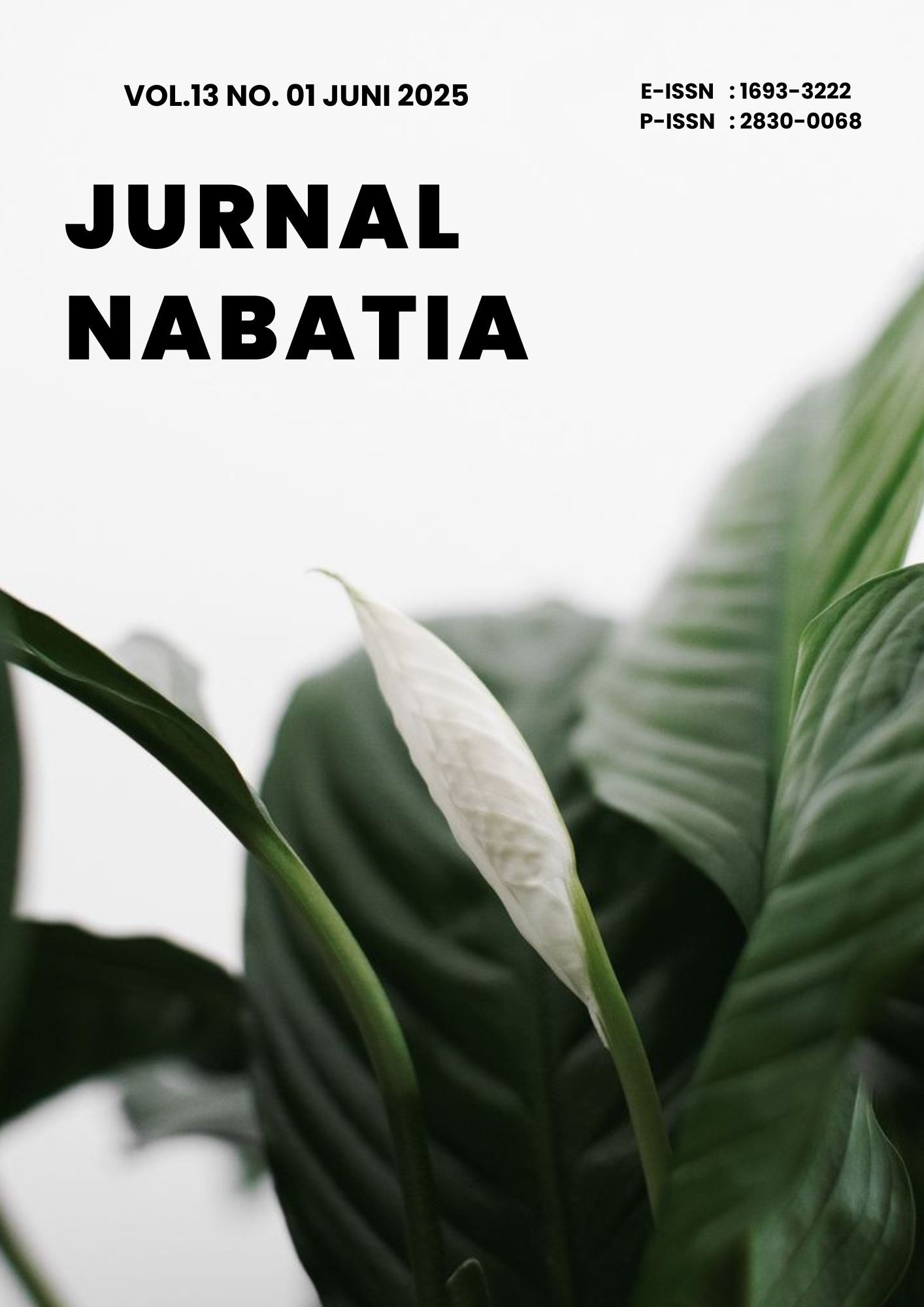Effect of Treating the Black Seed Plan, Nigella sativa L. With Nano-iron Oxide and Vitamin C on Some Physiological Traits and Yield.
DOI:
https://doi.org/10.21070/nabatia.v13i1.1650Keywords:
Iron Nanoparticles, Vitamin C, Nigella SativaAbstract
In this study we sought to determine the effects of spraying nano-iron oxide and vitamin C on certain physiological traits, yield components, and volatile oil content of black seed plant (Nigella sativa) during the 2023 season, November 5. Concentrations of nano-iron oxide (0, 40, 80, 120 mg L⁻¹) and vitamin C (0, 50, 100 mg L⁻¹) were applied as foliar sprays to plants cultivated in plastic pots using a completely randomized design (CRD) in experiment. Results indicate that the treatment of 120 mg L⁻¹ nano-iron oxide together with 100 mg L⁻¹ vitamin C produced a highly significant improvement on most of the selected traits. The treatment proved better in yield components of plant such as number of capsules per plant (34.50), number of seeds per capsule (48.17), 1000 seed weight (3.99 g) and volatile oil percent (2.09%).
References
B. Lakkoju, S. Asuthkar, G. Rambabu, and K. Balakrishna, “Phytochemical and Biological Properties of Anticancer Medicinal Plants From India,” in Harnessing Medicinal Plants in Cancer Prevention and Treatment, IGI Global, 2024, pp. 165–184. doi: 10.4018/979-8-3693-1646- 7.ch006. DOI: https://doi.org/10.4018/979-8-3693-1646-7.ch006
S. Begum and A. Mannan, “A review on nigella sativa: a marvel herb,” J. Drug Deliv. Ther., vol. 10, no. 2, pp. 213–219, 2020. DOI: https://doi.org/10.22270/jddt.v10i2.3913
R. I. M. Almoselhy, “Formulation and Evaluation of Novel Nutraceuticals Rich in Protein, Vitamins, Minerals, Natural Flavors, and Steviol Glycosides for Improving Quality of Life,” 2023, doi: 10.2139/ssrn.4471805. DOI: https://doi.org/10.2139/ssrn.4471805
R. A. Crane and D. J. Sapsford, “Towards sustainable mass production of metallic nanoparticles: Selective synthesis of copper nanoparticles directly from malachite ore,” Miner. Eng., vol. 196, p. 108048, May 2023, doi: 10.1016/j.mineng.2023.108048. DOI: https://doi.org/10.1016/j.mineng.2023.108048
J. Jeevanandam et al., “Green approaches for the synthesis of metal and metal oxide nanoparticles using microbial and plant extracts,” Nanoscale, vol. 14, no. 7, pp. 2534–2571, 2022. DOI: https://doi.org/10.1039/D1NR08144F
A. Sharma, B. Shahzad, A. Rehman, R. Bhardwaj, M. Landi, and B. Zheng, “Response of phenylpropanoid pathway and the role of polyphenols in plants under abiotic stress,” Molecules, vol. 24, no. 13, pp. 1–22, 2019, doi: 10.3390/molecules24132452. DOI: https://doi.org/10.3390/molecules24132452
B. Lax and A. H. Guenther, “Quantitative aspects of a soft x‐ray laser,” Appl. Phys. Lett., vol. 21, pp. 361–363, 1972. DOI: https://doi.org/10.1063/1.1654413
A. M, Al-Saeedilhsan, and J. Ethbeab, “Effect of hybrid and organic fertilizer K-FULV GROWER on some vegetative traits of Brassica,” vol. 20, no. 91, pp. 7669–7677, 2022, doi: 10.14704/nq.2022.20.8.NQ44792.
A. W. M. Mahmoud et al., “Foliar Application of Different Iron Sources Improves MorphoPhysiological Traits and Nutritional Quality of Broad Bean Grown in Sandy Soil,” Plants, vol. 11, no. 19, 2022, doi: 10.3390/plants11192599. DOI: https://doi.org/10.3390/plants11192599
N. Smirnoff, “Chapter 4 - Vitamin C: The Metabolism and Functions of Ascorbic Acid in Plants,” in Biosynthesis of Vitamins in Plants Part B, vol. 59, F. Rébeillé and R. Douce, Eds. Academic Press, 2011, pp. 107–177. doi: https://doi.org/10.1016/B978-0-12-385853-5.00003-9. DOI: https://doi.org/10.1016/B978-0-12-385853-5.00003-9
Downloads
Published
How to Cite
License
Copyright (c) 2025 Ayyub J.Abdlrahmaan Al-Bayaty

This work is licensed under a Creative Commons Attribution 4.0 International License.
Copyright Notice
Authors retain copyright and grant the journal right of first publication with the work simultaneously licensed under a Creative Commons Attribution 4.0 International License that allows others to share the work with an acknowledgement of the work's authorship and initial publication in this journal.





